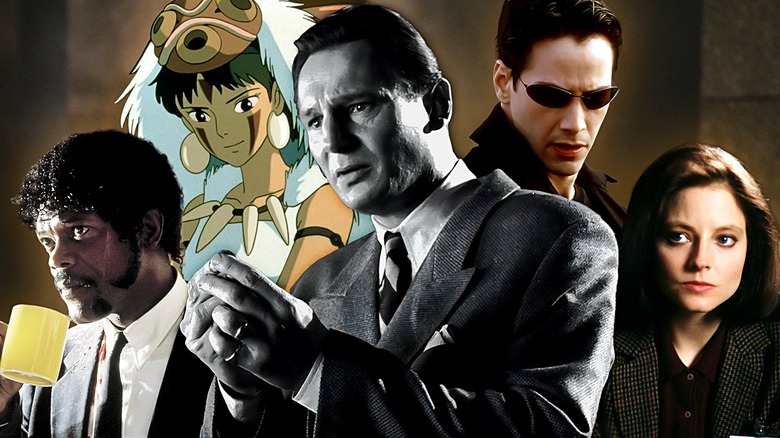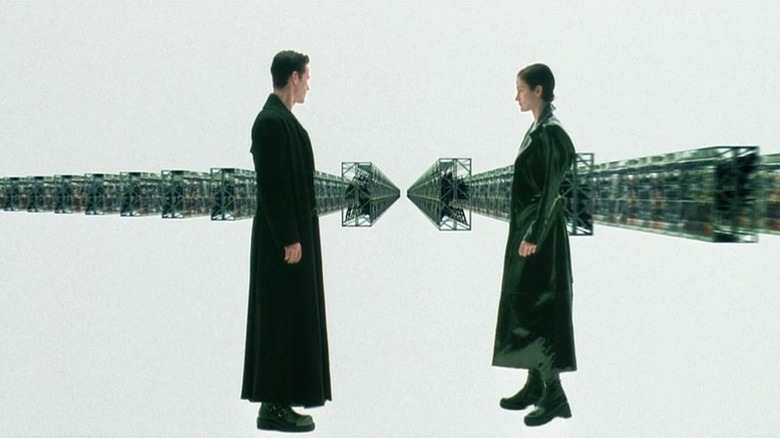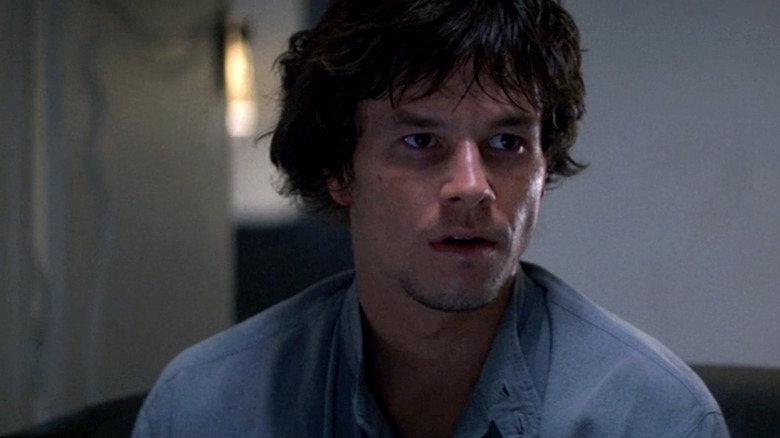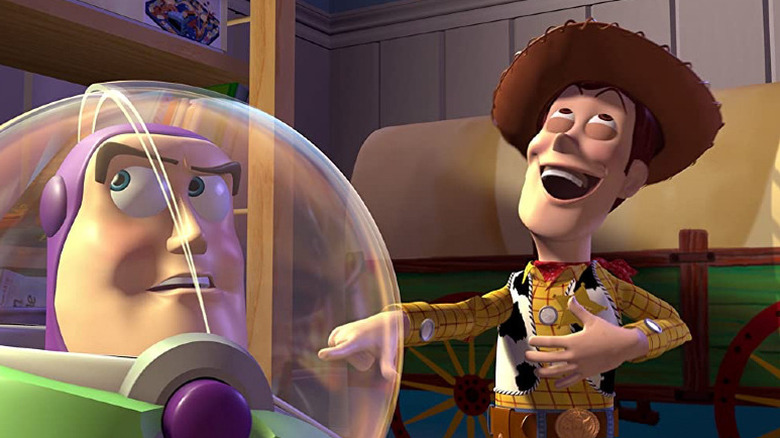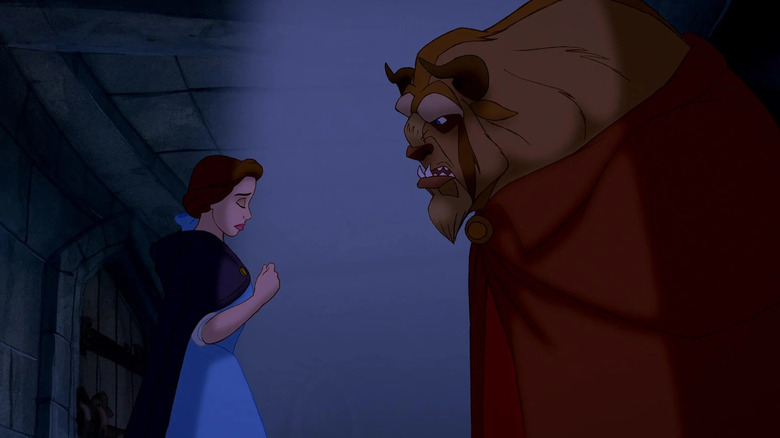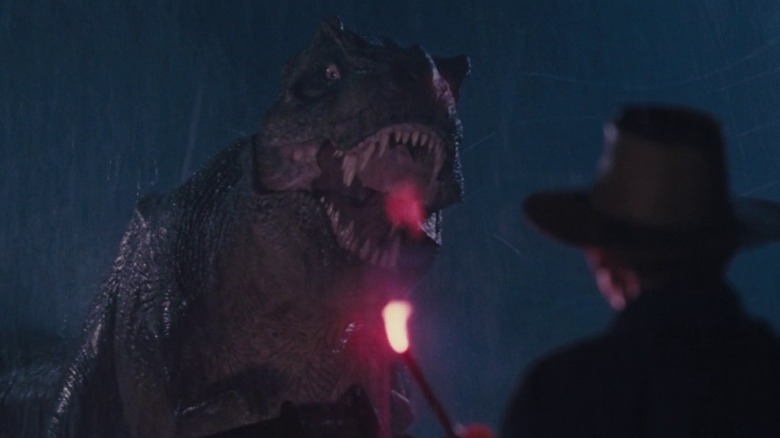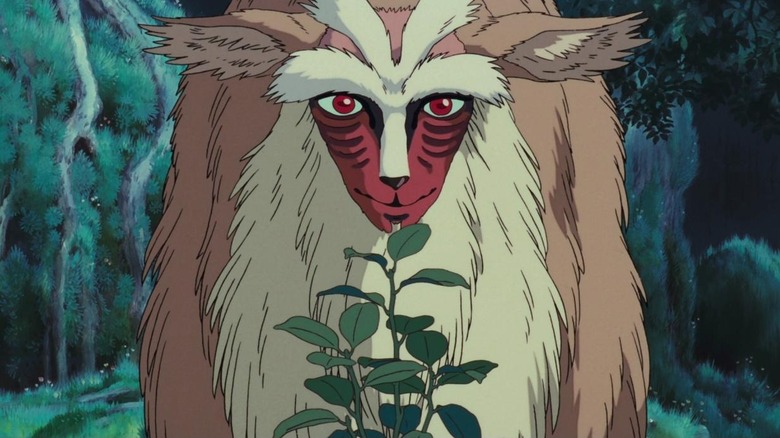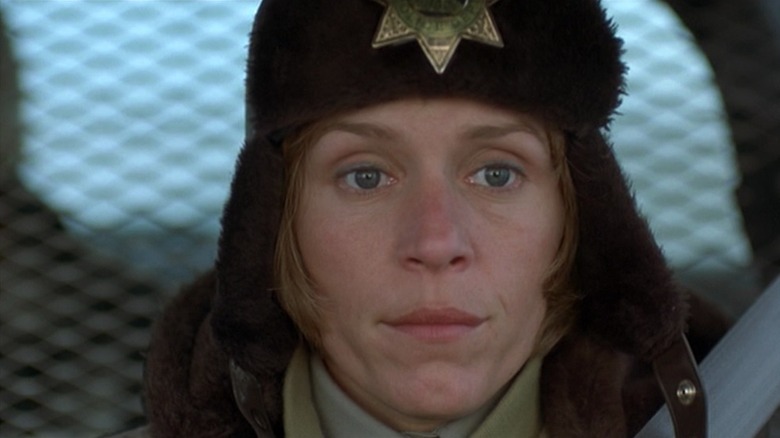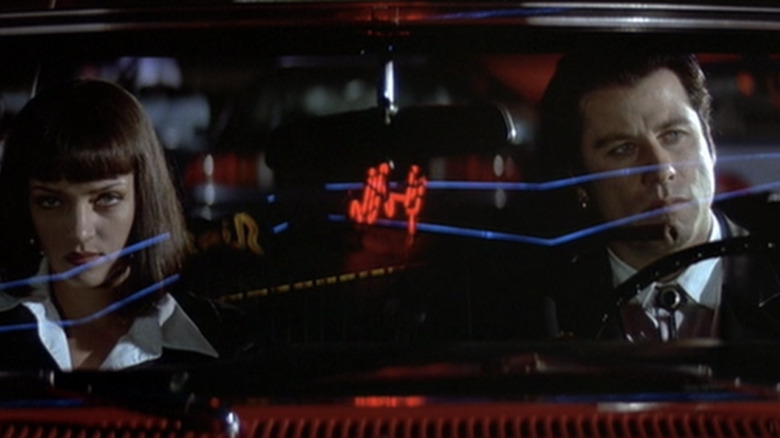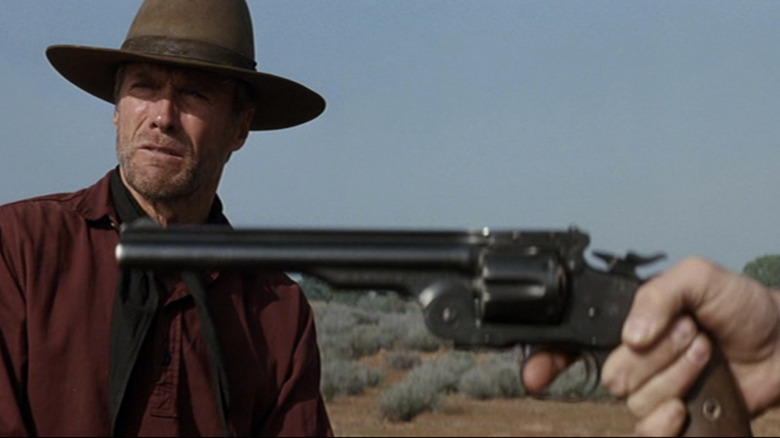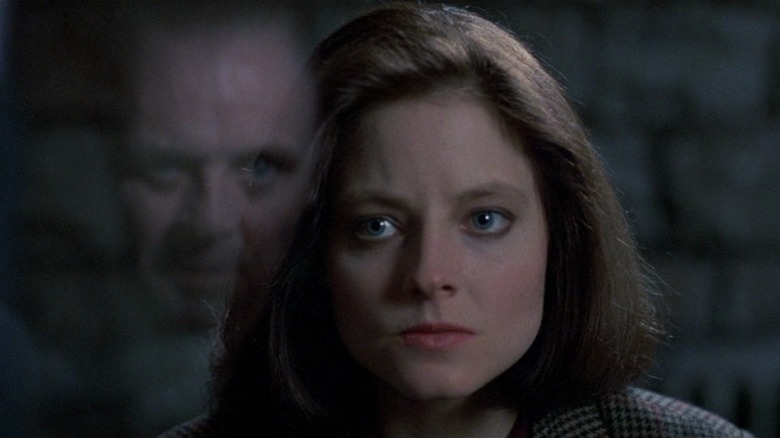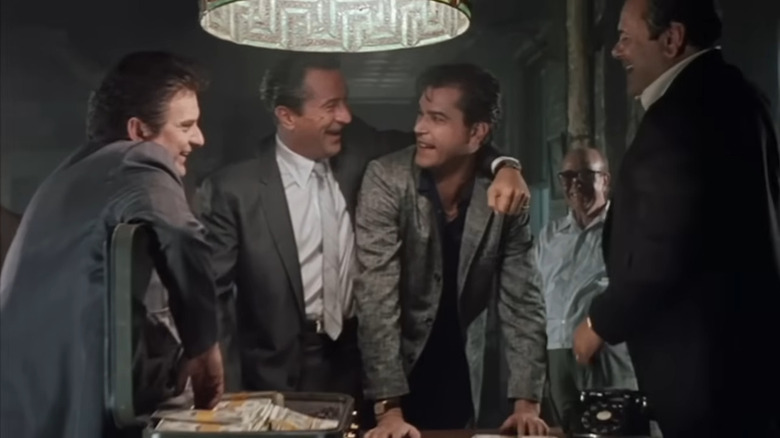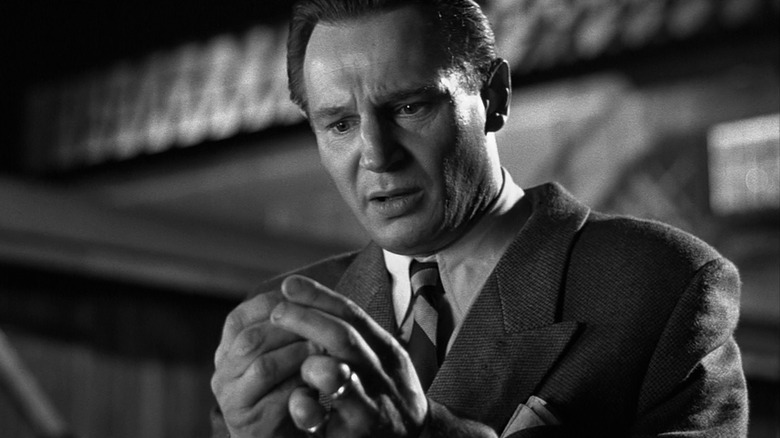15 Best Movies Of The 1990s, Ranked
The 1990s are having a moment, a quarter of a century (yikes!?) since we welcomed the new millennium. Maybe it's merely millennials sipping the sweet nectar of nostalgia, "kids these days" having an archaeological-like fascination with the past, or our collective desire to remember the last time the world wasn't constantly ending (except on the big screen). Whatever the reason, it's also worth noting the '90s were also a terrific time for movies.
It was the last decade before Hollywood completely sold its soul to serialized slop. Sure, the film industry has long fawned at the feet of franchises, but get this: in the '90s, only a handful of sequels led the end-of-year box office, while Best Picture-winners even topped the domestic box office twice. Beyond the box office, the decade saw the apex of the indie film movement, "grown up" movies still being made for theaters, and spandex-clad superheroes staying an unrealized dream, not an unstoppable inevitably.
Movies were great in the '90s; now armed with the benefit of time, I'm counting down the best. While personal preference plays a part, I'm ranking these based on influence, re-watchability, cultural footprint, and good old-fashioned quality. Only three of these 15 movies won Best Picture, but each deserves its place as one of the greatest movies of the 1990s.
15. Saving Private Ryan
"Shakespeare In Love" campaigned its way to Best Picture, but the Oscar that year belonged to one of the best war movies, Steven Spielberg's "Saving Private Ryan." Alas, the producer of "Shakespeare," Harvey Weinstein, is a dirtbag, who ran a smear campaign arguing "Ryan" collapses after the Normandy invasion scene. Even if that were true (it's not), the most rivetingly realistic war scene outside of documentary footage would alone warrant an Oscar for "Ryan." Instead, it gets a place on this list.
While Spielberg has made good movies since, "Saving Private Ryan" is his last masterpiece, if only for reminding us how horrible World War II was for the heroes who fought it. Their sacrifice is powerfully conveyed by the entire cast, especially Tom Hanks, who having already won two Oscars that decade was sadly denied his much-deserved third. Like Spielberg's "Schindler's List" four years earlier, "Saving Private Ryan" has graduated from "great movie" to "should be required viewing in schools."
14. The Matrix
The Wachowski's set out to make a movie combining their love of philosophy, anime, kung fu, and cyber punk dystopian fantasy. What they created was the most influential action movie of the past 25 years. In the early aughts "The Matrix" was parodied by everything from "Shrek" to "Scary Movie," so much that people forgot what a milestone in action cinema it was. The slo-mo style, particularly the "bullet time technique," found its way into countless action films to follow, including the superhero films that would come to dominate the next two decades.
But "The Matrix" was more than a triumph in cinematic style (or style period – those black clothes and shades were cool). It's also a thinking-man's movie, serving as a Trojan horse for philosophical concepts as diverse as Plato's Cave, Zen, and simulation hypothesis. It's hard to believe a studio would give the directors behind the massive-bomb "Bound" the greenlight to make this heady movie (though not surprising why Will Smith turned "The Matrix" down); but that was the '90s for you.
13. Boogie Nights
Paul Anderson earned his reputation as one of the greatest living directors in the '90s. Of course, I'm referring to the director of "Mortal Kombat." Kidding, I'm actually talking about P.T. Anderson, the creative mind behind "Boogie Nights" and "Magnolia." Alas, this is only a 15-film list, so while "Magnolia" is a magnificent movie, I've got to give the edge to "Boogie Nights." Released in 1997, Anderson's second film signaled his arrival as a mega-talent, as it blends both the maturity of a cinematic virtuoso, with the visual panache of a hungry young artist who loves playing with the camera.
"Boogie Nights" gave Burt Reynolds' one last great role as an amoral porn filmmaker, while making Mark Wahlberg a movie star as the wide-eyed dropout who dreams of stardom. Surrounding them are the exceptional ensemble of Julianne Moore, Heather Graham, John C. Reilly, Don Cheadle, William H. Macy, and Phillip Seymour Hoffman. The amazing thing is, these acting heavyweights came together because they believed in the vision of a then-26-year-old filmmaker. I'd say it worked out okay.
12. Toy Story
Traditional 2D animation was taken for granted for most of film history. All of that changed in 1995 with Pixar's "Toy Story." The movie was largely sold on the novelty of a feature-length computer-animated movie, but it became a big hit (topping the domestic charts with $192 million) because it established the Pixar style that took the studio to infinity and beyond. This wasn't the hand-drawn, Disney animated movie we were used to seeing, typically based on an epic fairy tale where good triumphs over evil.
"Toy Story" was a character-driven dramedy that took a fantastical "what if?" premise ("what if toys came to life?") to sneak in a true-to-life story viewers of all ages could relate to –- jealousy. Every viewer knows what it's like to have a favorite toy ... and also knows what it's like to be passed over for someone else. "Toy Story" gave young viewers (heck, every viewer) a safe place to confront this life lesson. So even if animation styles change, the moral of "Toy Story" never will.
11. Beauty & The Beast
The '90s announced the arrival of computer-animated films that would define the next decade, but it also showcased the absolute heights of the hand-drawn style that Walt Disney pioneered. The Disney Renaissance that began with "The Little Mermaid" in 1989 reached its peak in the early-to-mid '90s with "Beauty and the Beast," "Aladdin," and "The Lion King." But I believe the best of the bunch (and perhaps Disney's best, period) belongs to "Beauty & The Beast."
With its "tale as old as time," the 1991 film harkened back to Disney fairy tales of old, like "Cinderella" and "Pinocchio," while its inclusion of computer animation predicted the rise of Pixar. But more than anything, "Beauty & The Beast" remains the finest representation of the Disney Renaissance –- from the soaring sounds from maestro composer Alan Menken, to the painterly (and painstaking) work of its animators, to the "cartoon characters" who feel as real as any human actor. "Beauty and the Beast" was the first animated film to be nominated for Best Picture (the winner is also on this list), but its contribution to film culture shines brighter and lasts longer than gold.
10. Jurassic Park
Steven Spielberg had his greatest year in 1993 by directing both the Best Picture-winning "Schindler's List," and the box office behemoth, "Jurassic Park." Besides breaking the opening weekend record (something the franchise did two more times), "Jurassic Park" became the highest-grossing movie ever, besting Spielberg's own "E.T. The Extra-Terrestrial" from 1982. "Jurassic Park" was born from the brain of Michael Crichton, but the movie is pure Spielberg.
The T-rex attacking the jeeps and the raptors stalking the kids in the kitchen are both masterclasses in suspense cinema, while the first big reveal of the dinosaurs demonstrates Spielberg's singular gift for inspiring awe. There's little moments ("objects in mirror are closer than they appear") and big scenes (including my favorite part, when the T-rex saves the day from the raptors). Whether it's for the first time or the fiftieth, when you finish "Jurassic Park" you know you have seen a capital-M movie. Despite being an adventure 65 million years in the making, "Jurassic Park" hasn't aged a day.
9. Malcolm X
For the past two decades, independent filmmakers have "graduated" from micro-budget indie flicks to overseeing multimillion-dollar franchise pictures. That's like going from a sailboat to a cruise ship. Is it any wonder only a handful (e.g. Christopher Nolan and Ryan Coogler) have successfully made the switch? The '80s amd '90s were different. If a director proved their mettle with a microbudget, the studio gave them more money to make the kind of personal films that built their fanbase in the first place.
Enter Spike Lee. The NYU-grad parlayed his brilliant "Do The Right Thing" in 1989 into a series of personal pics in the '90s, his most ambitious achievement being his epic biopic, "Malcolm X." The 1992 film is massive in scope, subtle in its characterization, and imbued with the energy and empathy, driven by a talented young filmmaker getting the chance to work on his lifelong passion project. Lee found his muse in Denzel Washington, whose penetrating, powerhouse performance proves why he is one of our finest movie stars.
8. Princess Mononoke
The animation scene in the '90s was defined by the Disney Renaissance and the Pixar Revolution, but the decade's greatest animated movie came from the filmmaker who inspired them both; Hayao Miyazaki. Japan's animation auteur had spent decades honing his craft on stories both large ("Castle In The Sky") and small ("Kiki's Delivery Service"), while blending the fantastic with the familiar ("My Neighbor Totoro"). But as great as those films are, each was a warmup for his 1997 masterpiece, "Princess Mononoke."
Watching "Princess Mononoke" is like being whisked away into a fairy tale, at times even a dream. But despite being a "cartoon," this isn't meant for children; even grown ups may bristle at its wrenching violence and startling storytelling. "Princess Mononoke" became the highest-grossing Japanese film ever, while its domestic gross outperformed any foreign animated film to that point, helping pave the way for anime's pop cultural footprint. Miyazaki followed "Princess Mononoke" with his other great masterpiece, "Spirited Away" in 2001," making two of the best movies for their respective decades back to back.
7. The Shawshank Redemption
It's practically a meme that "The Shawshank Redemption" has long held the number one spot on IMDb's Top 250. I suspect it's a mix of the "internet's gonna internet," as well as an act of defiance since it bombed at the box office. While it's overrated on IMDb, there's no denying that "The Shawshank Redemption" belongs on this list, if for no other reason than it's so easy to love. I mean, it may not be your favorite, but who doesn't like "The Shawshank Redemption?"
Despite its (deserved) R-rating, the movie seems like a throwback to a simpler time. Strip away the language and violence, and you may feel like you're watching an old Hollywood flick from the '40s or '50s. At the same time, it never flinches from showing the brutal hardship of prison life. While so many movies fail in their pursuit of the mythical "modern audience," movies like "The Shawshank Redemption" continue to win new fans not because they pine for relevance, but because they achieve timelessness.
6. Fargo
"Favorite Coen Brother's movie" is like a fingerprint; everybody has one and they're all different. For my money, "Fargo" is the Coen Brother's finest hour, and that alone warrants its inclusion on whatever "best of" list it's on. Others may place their Oscar-winning Cormac McCarthy adaptation "No Country For Old Men" higher, but "Fargo" is a wholly original story that sprang solely from their fertile imaginations, and thus bares their hallmarks of harmonizing quirky drama with dark comedy.
And while I personally have a soft spot for "Raising Arizona" and "True Grit," I have to acknowledge no other Coen Brothers' film better blends the filmmaker's trademarks into an evergreen morality play about the human condition. While "Fargo" isn't "mainstream," per se, it is accessible to all, a film both diehard Coen Heads and casual movie-lovers can enjoy. Credit also goes to the entire ensemble, especially Frances McDormand in an Oscar-winning role, who crafts one of cinema's greatest heroines in Marge Gunderson. Funny, thrilling, troubling, and thought-provoking, "Fargo" finds the Coen Brothers at their best.
5. Pulp Fiction
There are a few "before and after" moments in cinema history, and one of them is undeniably "Pulp Fiction" in 1994. It announced the arrival of one of the most singular voices in American cinema, Quentin Tarantino, but even that sells the film short. "Pulp Fiction" took the indie film movement out from the back of the video stores where Tarantino worked and into the mainstream. Yes, there were indie films before "Pulp Fiction," but none made their presence felt with such dynamic aplomb.
Famously, "Pulp Fiction" got creamed on the awards circuit by "Forrest Gump," a fine film to be sure, but also a tad bit antiquated, even then. Hollywood was willing to let "Pulp Fiction" at the table, but "Forrest Gump" still sat at the head. But with three-plus decades removed, "Pulp Fiction" has cemented itself as 1994's best film. Tarantino's ensemble cast brilliantly breathes life into his characters and dialogue, while the auteur tells a story as wild, winding, and fast-paced as his speaking style. Even today, "Pulp Fiction" remains as audacious as a shot of adrenaline, proving originality always stays fresh.
4. Unforgiven
"Unforgiven" was supposed to be just another Clint Eastwood western, like the many he'd made before in front of and behind the camera (or both). Instead, "Unforgiven" shocked the world, and maybe even its filmmaker himself, by being not only one of the best westerns, but the movie that closed the book on one of the most mythic of American movie genres. How did it do it?
"Unforgiven" is a revisionist western that strips away the Wild West legends the John Wayne era helped establish, but plenty had done that before. "Unforgiven" is different, and better, because it manages the delicate balance of being revisionist and romantic, a denunciation of violence, and a defense of its practitioners. It also pulls one of cinema's great sleights of hand, as we root for aged gunslinger William Munny (Eastwood) as he seeks justice against the cruel and corrupt Little Bill Daggett (Gene Hackman), only to find out in the end Munny is more of a monster than Daggett could ever be. While the 1993 Best Picture winner warrants several viewings to properly appreciate its position, each one will leave you convinced that "Unforgiven" is unforgettable.
3. The Silence of the Lambs
Plenty of movies are better than their source material, including some of the greatest of all time, like "Casablanca," "The Godfather," and "The Silence of the Lambs." Thomas Harris' best-selling novel was a thrilling page turner, but the kind you read on a plane or the beach. Jonathan Demme's adaptation is something more. While categorized as "horror," the 1992 Best Picture winner defies easy classification. "The Silence of the Lambs" is terrifying at times, but incredibly exciting and even deeply moving at others.
It's Demme's tour de force, but mostly that of its stars, Anthony Hopkins and Jodie Foster, who created two of cinema's greatest characters. Hopkins manages to make an all-time iconic movie monster in Hannibal Lecter with only 16 minutes of screen time, sending chills down your spine (and everywhere else) with only a glance. Hopkins has the more flamboyant part, but no actor has ever been better than Foster as Clarice Starling. This is no showy, shouty, "Oscar-baity" performance, but a deeply disciplined actor at the height of her craft, creating a real person you care for like a close friend. An unrivaled horror film, the scariest part of "The Silence of the Lambs" is how good it is.
2. Goodfellas
Martin Scorsese started the '80s making the best movie of the decade with "Raging Bull" in 1980. Ten years later, he started the '90s by making one of the best movies of that decade with "Goodfellas" in 1990. The two films bookend a strange ten years for Scorsese that included commercial gigs ("The Color of Money"), oddball outliers ("After Hours"), and movies on the cusp of greatness ("The Last Temptation of Christ"). But "Goodfellas" finds the maestro back in his comfort zone, making a mile-a-minute gangster picture for the first time in 17 years, and the film that would define the genre more than any other mob movie save "The Godfather."
Its inspiration can clearly be felt in HBO's landmark "The Sopranos," so it helped launch the Golden Age of TV. And you can also see its imprint on crime sagas from "Heat" to "The Dark Knight" to Scorsese's own "Casino" and "The Departed." But not even Scorsese could ever match "Goodfellas" sense of style and urgency. Scorsese criticized Marvel movies for being more like a theme park ride, but "Goodfellas" makes the life of a gangster feel just like that; exhilarating and exciting one moment, until you're so terrified you have to get off, only to find yourself trapped. "Goodfellas" isn't a movie you watch; it's one you live in, like only Scorsese can do.
1. Schindler's List
No movie could conceivably paint a full picture of the horror of the Holocaust. Yet none has ever come closer than "Schindler's List," which is why it is the best movie of the '90s, and one of the greatest of all time. Despite its subject matter, watching "Schindler's List" doesn't feel like a homework assignment; it's also a magnificent movie that finds Steven Spielberg at the peak of his powers as a filmmaker, using every last ounce of his cinematic skills to tell a story that clearly moved him deeply, an ordeal that kept him out of the director's chair for four years.
"Schindler's List" is set during the Holocaust, but it's about ordinary people in an extraordinary situation. On the one hand, you have Oskar Schindler (Liam Neeson), a philandering industrialist who risks his own life to save thousands. On the other, you have Amon Göth (Ralph Fiennes), a monster who dehumanizes an entire race of people into mere playthings in his sadistic sandbox. "Schindler's List" isn't just a movie you should watch; it's one you must watch, to experience both an incomparable cinematic achievement, and to glimpse both the depths of human depravity, and the heights of our heroic potential.
